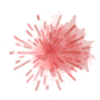Principle: Connection

Human Connection is one of the most vital aspects of our existence. Connections range from the micro, simple eye contact or a smile, to the macro, leaders Connecting the big organizational dots. With each Connection, we have the opportunity to create long-lasting bonds and also become the needed bridges, helping people get from where they are to where they want or need to be. The opportunities to Connect small or large dots for and with others exist every day – and with each dot there is opportunity for deeper, more meaningful Connections. Each one of us has the opportunity to be the Connector.
Overview
The act of Connecting — with each other and with our Experience Intention — is the foundational building block of cultivating a more vibrant and alive culture. When we choose to establish strong and meaningful Connections with our team members, providers, patients, and guests, we nurture healthy relationships while strengthening and solidifying our leadership.
Every day we are seeing more and more ways that technology is enhancing or extending (or diminishing) Connection. We believe there’s really nothing better than the original human-to-human interaction. This intimate, person-to-person Connection is the way we get our best work done.
How it fits into LEADING
Our role as leaders requires that we create personal and meaningful Connections between team members and with patients and guests, and perhaps most importantly, that we Connect those we LEAD to the purpose of our work and the vision for a brighter future. We can no longer simply study Connective tissue; we must become Connective tissue for our organizations. Once those bridges are established, we can move forward, creating additional Connections with the people we serve (our patients and guests), our processes, and our places. Creating Connections helps amplify our vision for creating a healthier organization and world.









